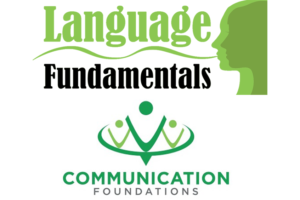Verbal Apraxia of Speech
What is Verbal Apraxia?
Verbal Apraxia, also known as acquired Apraxia of Speech or AOS, is a speech sound disorder. People with this disorder have trouble saying what he or she wants to say correctly and consistently.
Apraxia of speech is a neurological disorder that affects the brain pathways involved in planning the sequence of movements involved in producing speech.
Apraxia therapy may be needed in order to improve speech in patients. The brain knows what it wants to say but cannot properly plan and sequence the required speech sound movements. If you believe that you may have Apraxia, contact Language Fundamentals today!
What are the causes of Apraxia of speech?
A speech disorder is caused by weakness or paralysis of the speech muscles (the muscles of the jaw, tongue, or lips). Some people have both Dysarthria and Apraxia, which can make diagnosis of the two conditions more difficult.
The severity of this disorder varies from person to person. It can be so mild that it causes trouble with only a few speech sounds or with pronunciation of words that have many syllables.
In the most severe cases, a person with Apraxia of Speech might not be able to communicate effectively by speaking and may need the apraxia treatment or help of alternative communication methods.
o Distorting sounds. People may have difficulty pronouncing words correctly. Sounds, especially vowels, are often distorted. Because the speaker may not place the speech structures (e.g., tongue, jaw) in the right place, the sound comes out wrong. Longer or more complex words are usually harder to say than shorter or simpler words. Sound substitutions might also occur when it is accompanied by aphasia.
o Making inconsistent errors in speech. For example, someone may say a difficult word correctly but then have trouble repeating it, or may be able to say a particular sound one day and have trouble with the same sound the next day.
o Groping for sounds. They often appear to be groping for the right sound or word, and may try saying a word several times before they say it correctly.
o Making errors in tone, stress, or rhythm. Another common characteristic is the incorrect use of prosody, which is the rhythm and inflection of speech that we use to help express meaning. Someone who has trouble with prosody might use equal stress, segment syllables in a word, omit syllables in words and phrases, or pause inappropriately while speaking.

Apraxia Treatment & Apraxia Therapy
Speech language pathologists from Language Fundamentals use different approaches of apraxia of speech treatment since no single approach has been proven to be the most effective. Apraxia therapy is tailored to the individual and is designed to treat other speech or language problems that may occur together. Frequent, intensive, one-on-one speech-language apraxia therapy sessions are needed for adults with this disorder.
In severe cases, adults with may need to find other ways to express themselves. These might include formal or informal sign language; a notebook with pictures or written words that can be pointed to and shown to other people; or an electronic communication device—such as a smartphone, tablet, or laptop computer – which can be used to write or produce speech.
ARE YOU READY TO GET STARTED?
CONTACT US TODAY TO SCHEDULE AN APPOINTMENT

